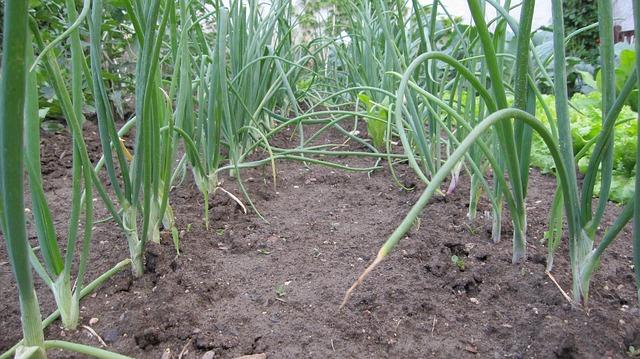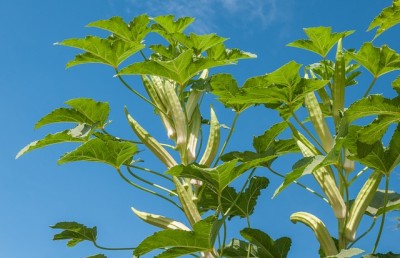Are you thinking of planting a garden this year that includes more than just vegetables? Are you wanting to learn new ways to use less pesticides, less room, but gain more produce? One way to accomplish all of this is to plant companion plants around your vegetables. Let’s take a look.
Companion gardening is when you include different species of plants that benefit each other when grown together in your vegetable garden. They can be planted and grown side by side and have many uses. Companion plants are a way to maximize garden area, attract beneficial insects and wildlife, or simply repel pests.
Companion planting does very well in smaller spaces and is a very organic way to introduce variety to the soil. Companion planting eliminates any monoculture that many traditional gardens create. In other words, the plants do the work for you.
Need Non-GMO Heirloom Seeds For Your Spring Garden? The Best Deals Are Right Here!
If you want to add some variety to your garden, and some color, considering trying a few of the companion plants below.
1. Lovage. This tall plant is good to use as a wind-breaker or shade-provider. Vegetable plants tend to increase in flavor and health when planted near lovage. It does well by potatoes, root vegetables and peppers. Lovage can be used as a border plant or in patches.
2. Marigolds. These beautifully bright flowers repel aphids, beetles, potato bugs, squash bugs and nematodes. You can plant marigolds (make sure they have a scent) around any garden vegetable, with a huge list including: tomatoes, beans, cucumbers, eggplant, cabbage, broccoli, peppers, melons and kale.
3. Okra. Okra offers protection from wind and can also create partial shade during the summer. It works as a border plant when needed. Okra increases the oil in nearby herbs. Okra also offers some protection from aphids. For most benefits, plant okra beside cucumbers, peppers, melons and eggplant.
4. Buckwheat. Plant buckwheat around Brussels sprouts, broccoli and peppers. Buckwheat attracts bees and other pollinators. Once the season is over, Buckwheat is good to crunch up and use as mulch. It also works well as a lovely cover crop.
5. Geraniums. Besides adding color and variety to the vegetable garden, geraniums work to repel pests like spider mites, Japanese beetles and cabbage worms. Geraniums tend to do well near peppers, corn, cabbage, tomatoes and even grape vines. Geraniums last all summer long.
6. Marjoram. This is a low-growing herb. It doesn’t compete for space and is said to improve the flavor of vegetables around it. Marjoram, itself, is full of flavor and is wonderful when it is used in cooking.
7. Nasturtium. Great for repelling aphids, whiteflies, beetles and squash bugs, nasturtium is also beautiful and edible. Yes, that’s right, an edible flower that is sure to impress in summer salads! You can plant them around peppers, tomatoes, radishes, cucumbers, cabbage and fruit.
Companion Planting Tips
Avoid planting dill with carrots and tomatoes, and avoid putting beans near garlic, onions or chives. Fennel is a little fussy. It needs to be on its own, and away from other vegetables.
This New All-Natural Fertilizer Doubles Garden Production!
Keep track of maturation rates. To keep weeds at bay, plant your vegetables and companion plants so there is continuous blooming. As one plant fades, another will be ready to take over.
It is best to plant taller companion plants by vegetables that enjoy a bit of shade. This way, the companion plants can block the sun for part of the day. Put the vegetables that love sun at the south end of the garden and tall plants at the north end, as this will help let each plant get the sunlight it needs. Herbs often make great companion plants, too, so you can mix them through the garden (remember: no dill near carrots). Chives, onions and garlic are great repellers, too (just don’t put them near beans). Marigolds (especially French) should be planted all over the garden to be the most beneficial to repel pests and attract any beneficial critters.
Here’s another question to keep in mind: Are you planting for insect control, weed control, increased nutrition for the plants, for plant protection or simply because of space? For weed control, any low-growing plants will help. If you are trying to repel insects, remember that most plants with strong smells will do a great job. Marigolds do well for this.
So, take a little time and check out your potential companion plants. By planning your garden with such a variety, you can be sure to have a healthy harvest this year.
What companion plants would you add to the list? Share your advice in the section below:
Every Spring, Gardeners Make This Avoidable Mistake — But You Don’t Have To. Read More Here.
 Off The Grid News Better Ideas For Off The Grid Living
Off The Grid News Better Ideas For Off The Grid Living





